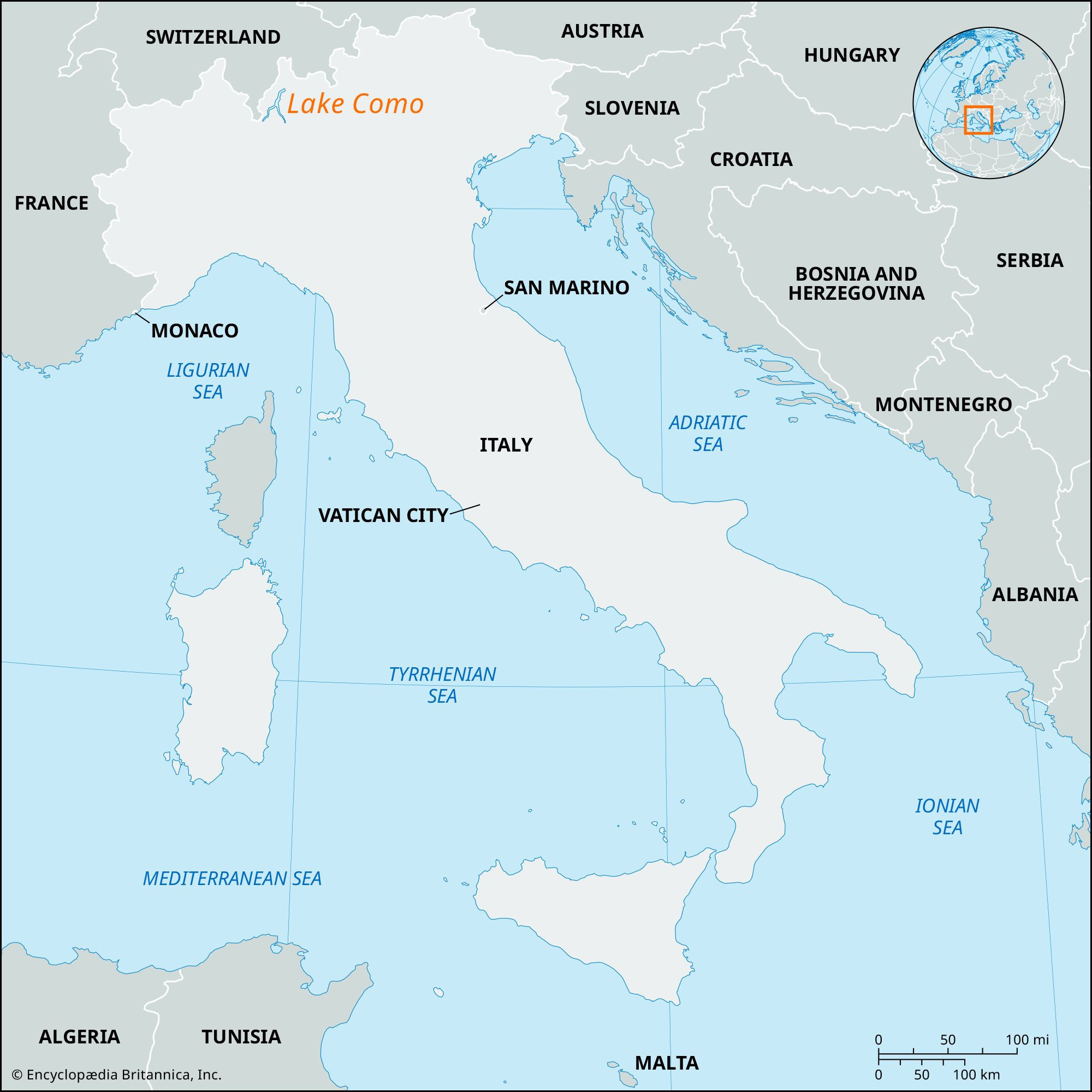Lake Como, a breathtaking destination renowned for its stunning scenery and picturesque towns, is nestled in the Lombardy region of Northern Italy. Often celebrated as one of the most beautiful lakes in the world, Lake Como offers a captivating blend of natural beauty and Italian charm. Its location, framed by dramatic mountains and dotted with elegant villas, makes it a sought-after destination for travelers seeking tranquility and scenic splendor.
Geographically, Lake Como is situated approximately 25 miles (40 kilometers) north of Milan, Italy’s fashion and financial hub. This proximity to a major international city enhances its accessibility, making it a popular escape for both tourists and locals alike. The lake rests at an elevation of 653 feet (199 meters), nestled in a remarkable depression carved by glacial activity. Surrounding Lake Como are majestic mountains, composed of limestone and granite, creating a dramatic backdrop. These mountains ascend to around 2,000 feet (600 meters) in the south and soar to over 8,000 feet (2,400 meters) in the northeast, contributing to the lake’s sheltered and impressive environment.
Lake Como is distinctive for its unique inverted Y shape, formed by three branches of almost equal length, each stretching about 16 miles (26 kilometers). One branch extends northward towards Colico. Of the remaining two, one reaches southwestward to the charming city of Como itself, lending the lake its name. The other branch meanders southeastward past Lecco, and is also known as Lecco Lake. The iconic Bellagio Promontory, often referred to as the “pearl of Lake Como,” marks the point where the lake bifurcates into these two southern branches, offering panoramic views and a strategic location.
Lake Como stretches for approximately 29 miles (47 kilometers) in length and reaches a width of up to 2.5 miles (4 kilometers). It encompasses an area of 56 square miles (146 square kilometers) and plunges to a maximum depth of 1,358 feet (414 meters), making it one of the deepest lakes in Europe. The lake is fed by the Adda River, which enters near Colico and exits at Lecco, contributing significantly to its water volume. Numerous other rivers and mountain streams, including the Mera River, also contribute to the lake’s waters. Lake Como experiences frequent fluctuations in water levels and is characterized by two prevailing winds: the tivano, a north wind blowing in the morning, and the breva, a south wind arriving in the afternoon, influencing boating and sailing conditions. Historically, the northern arm of Lake Como likely extended further to Chiavenna, encompassing the area now occupied by the smaller Mezzola Lake, showcasing the dynamic geological history of the region.
The shores of Lake Como are adorned with lush vegetation, thriving in the mild, Mediterranean-like climate. Vines, fig, pomegranate, olive, and chestnut trees, along with vibrant oleanders, flourish along the water’s edge, contributing to the area’s verdant appeal. While fishing for trout, eel, and agoni (a local herring) exists, pollution has unfortunately impacted the fish population. However, Lake Como’s primary allure remains its unparalleled natural beauty and the exquisite villas that grace its shoreline. Renowned lakeside resorts, each offering unique charm and attractions, include Como, Lecco, Bellagio, Tremezzo, Menaggio, and Varenna. Convenient steamer services connect several of these towns, providing easy access and stunning lake perspectives for visitors exploring this Italian gem.


